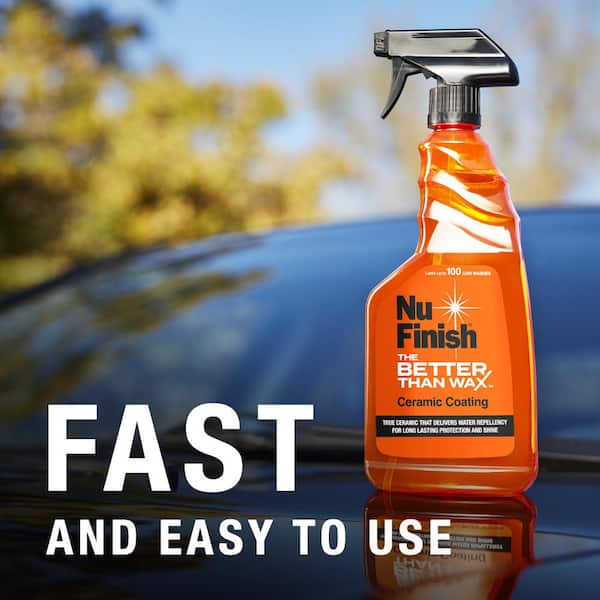Why Drivers Count On Ceramic Coating Philadelphia for Superior Lorry Care
Why Drivers Count On Ceramic Coating Philadelphia for Superior Lorry Care
Blog Article
Why Ceramic Layer Is the Ultimate Option for a Flawless Complete
Ceramic coating has actually arised as a leading service for those seeking a perfect finish for their cars, many thanks to its remarkable toughness and protective functions. This advanced fluid polymer not just bonds seamlessly with factory paint but additionally provides a powerful obstacle versus common threats such as scratches, UV rays, and environmental pollutants. Its hydrophobic residential properties simplify maintenance while boosting aesthetic appeal. Nonetheless, understanding just how this technology contrasts to traditional methods and exploring its application subtleties can expose much more about its worth. What aspects genuinely established ceramic finishing apart?
What Is Ceramic Covering?

When applied correctly, ceramic coating develops a hydrophobic surface area that fends off water and dust, making it much easier to preserve and cleanse. Unlike traditional waxes or sealers, which normally offer short-lived protection, ceramic finishings can last for numerous years, depending upon the product high quality and application technique. The process of using ceramic layer requires precise prep work, including thorough cleansing and in some cases repaint modification, to ensure ideal bonding and effectiveness.
Ceramic coverings are not limited to automobile surfaces; they can likewise be used on various materials, including glass, steel, and plastics, providing a functional service for enhancing protection. Overall, ceramic finish stands for a considerable advancement in surface area protection technology, integrating both functional and visual advantages for a vast variety of applications.
Benefits of Ceramic Finish
While many surface area defense alternatives exist, the benefits of ceramic finishing stick out due to its special homes and lasting performance. Among the key benefits is its phenomenal durability. Ceramic Coating Philadelphia. Unlike conventional wax or sealants that need regular reapplication, ceramic layers offer a resilient layer that can last for several years, considerably minimizing maintenance initiatives
An additional significant advantage is improved defense against environmental impurities. Ceramic coatings produce a hydrophobic surface that fends off water, dirt, and numerous toxins, making it much easier to clean. This function not only maintains the vehicle's appearance yet also minimizes the risk of rust and oxidation, specifically in harsh weather condition problems.
Moreover, ceramic finishes use premium resistance to UV rays, avoiding fading and degradation of paint over time. This UV protection is crucial for preserving the aesthetic worth of automobiles and surface areas revealed to direct sunshine.
Furthermore, the glossy coating achieved with ceramic coating improves the overall visual charm, offering surface areas a showroom-quality shine. On the whole, ceramic coatings stand for a significant development in surface defense technology, providing long-lasting benefits that deal with both useful and visual requirements.
Just How It Works
Comprehending the scientific research behind ceramic finishes reveals how they give such exceptional protection and durability. At its core, a ceramic layer is a fluid polymer that chemically bonds with the vehicle's manufacturing facility paint.
The application process involves several official site steps, including surface area preparation, which is vital to accomplishing optimum attachment. As soon as used, the coating undertakes a curing process, throughout which it sets and develops a semi-permanent bond with the paint surface. This bond is what differentiates ceramic coatings from traditional waxes and sealers, giving a longer-lasting protective barrier that can endure for years.
Moreover, the thickness of the coating can enhance its protective high qualities, guaranteeing that it can endure extreme conditions. Inevitably, the scientific research of ceramic coatings integrates sophisticated products with innovative application strategies to deliver an unrivaled degree of protection and visual improvement for lorries.
Contrast With Conventional Methods
When compared to standard paint security methods such as waxes and sealers,The benefits of ceramic finishes come to be specifically evident. While waxes use a short-lived luster, generally lasting a few weeks to a number of months, ceramic layers supply a resilient protective layer that can withstand for numerous years. This toughness significantly minimizes the regularity of reapplication, making ceramic coverings an extra economical solution gradually.
Additionally, typical methods frequently need comprehensive prep work and numerous applications to accomplish a sufficient level of protection. On the other hand, ceramic finishings bond at a molecular level with the vehicle's surface area, creating a durable shield against ecological impurities like UV rays, acid rainfall, and roadway salts. This bond enhances the vehicle's resistance to scratches and swirl marks, which are common with typical waxes and sealants.
Additionally, the hydrophobic residential properties of ceramic layers repel water and dust, bring about easier cleansing and maintenance. In contrast, wax and sealant-treated surface areas can bring in gunk, demanding even more regular washing - Ceramic Coating Philadelphia. In general, ceramic coatings not just give remarkable defense yet likewise supply Homepage a more visually attractive and enduring surface, developing them as the favored selection for critical vehicle proprietors
Application and Maintenance Tips

Utilizing a foam applicator, use the finishing in tiny areas, complying with the producer's standards regarding density and overlap. Enable sufficient treating time between layers, generally 24 hr, to guarantee appropriate bonding. After application, it is essential to stay clear of exposure to water or harsh elements for at the very least a week to permit the finish to totally heal.
Additionally, utilizing a ceramic maintenance spray can boost the coating's hydrophobic residential or commercial properties and durability. Normal examinations for any kind of indications of wear will aid maintain the finishing's integrity and protect that beautiful finish.
Conclusion
In conclusion, ceramic finish emerges as a premium option for achieving a remarkable auto coating. By developing a durable bond with factory paint, ceramic layer successfully shields versus scrapes, UV rays, and ecological contaminants.

Report this page